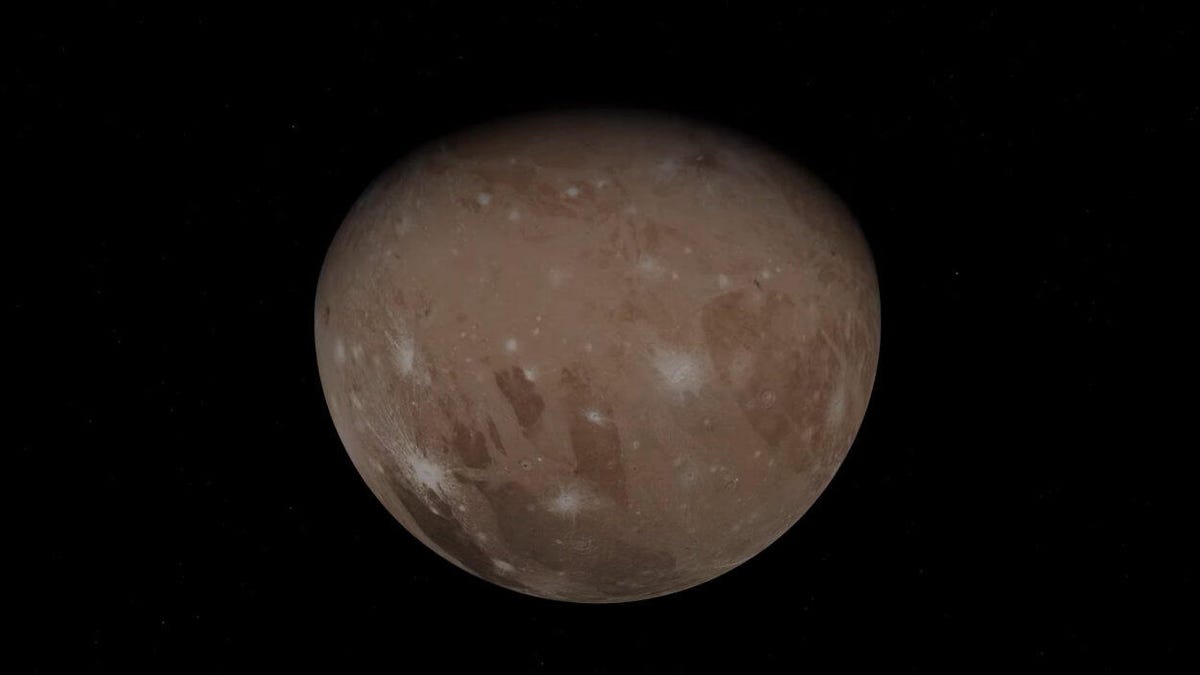Eerie NASA audio lets you hear what Jupiter moon Ganymede sounds like
Is that a dial-up modem or a celestial body?

Ganymede poses in a still from a NASA Juno flyby animation.
What does a moon sound like? NASA has an answer thanks to the Juno spacecraft. Juno swung by Jupiter's big moon Ganymede in June and sent back some stunning visuals. Its Waves instrument also collected data on electric and magnetic radio waves.
NASA shifted the Waves data into an audio range that humans can hear. The result is eerily like something you'd hear from an old-fashioned dial-up modem, or perhaps the soundtrack to some spooky '80s sci-fi alien movie.
Waves is focused on studying Jupiter's magnetosphere, the area around the gas giant controlled by its magnetic field. NASA says Jupiter's magnetosphere "is the largest object in the solar system. If it glowed in wavelengths visible to the eye, it would appear two to three times the size of the sun or moon to viewers on Earth."
Ganymede -- the largest of Jupiter's 79 known moons -- has its own magnetosphere. We might not be able to see these magnetic fields directly, but the audio version of Juno's experience brings the concept closer to home.
"This soundtrack is just wild enough to make you feel as if you were riding along as Juno sails past Ganymede for the first time in more than two decades," Juno principal investigator Scott Bolton said in a NASA statement on Friday. "If you listen closely, you can hear the abrupt change to higher frequencies around the midpoint of the recording, which represents entry into a different region in Ganymede's magnetosphere."
NASA has a knack for translating data into sound -- a process called data sonification -- to give us new ways of engaging with space missions. Hear the haunting sounds of black holes and galaxies or listen in on Juno's approach to Jupiter in 2016.
The not-so-dulcet tones of Ganymede won't lull you gently to sleep, but they might trigger memories of the internet's earlier days, when your greatest annoyance was mom picking up the phone while you updated your GeoCities Buffy the Vampire Slayer fansite.

